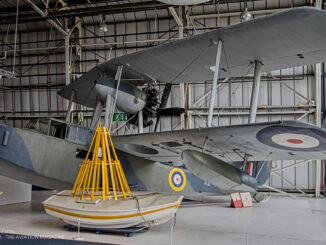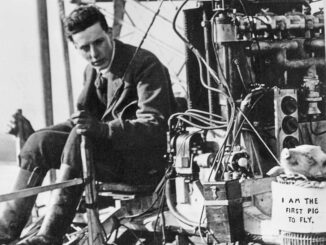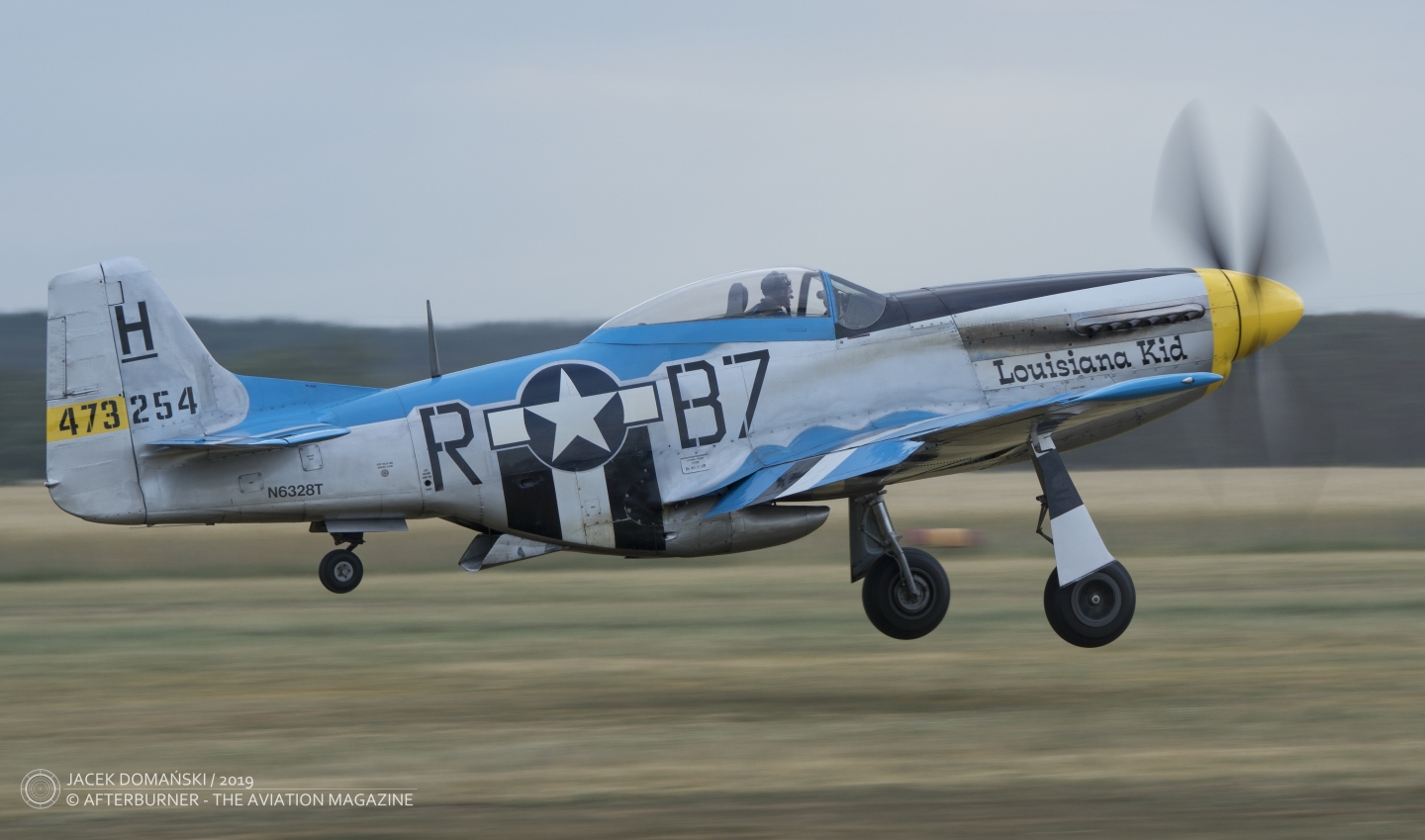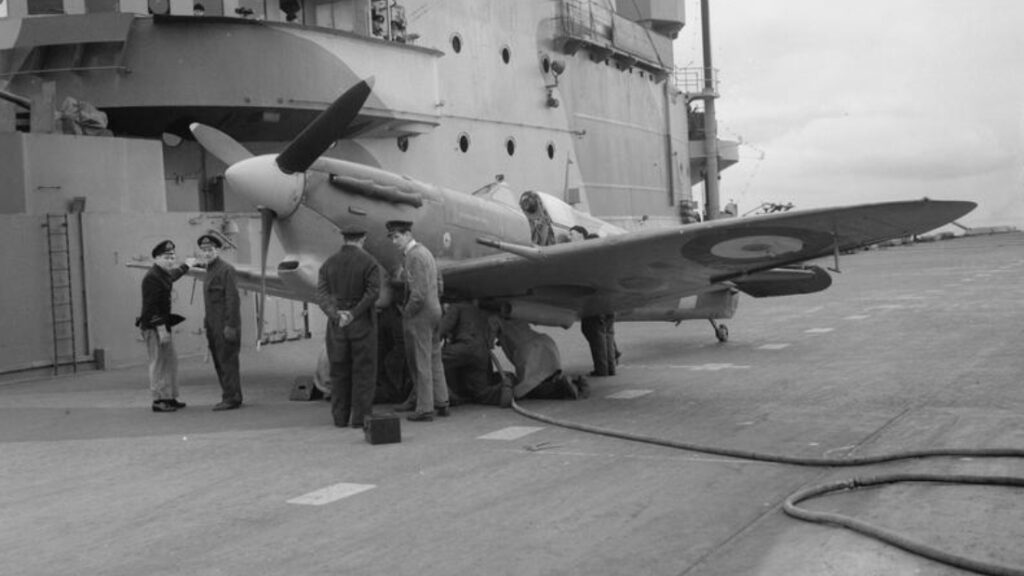 On 8th November 1942, with the beginning of Operation Torch in Africa, the anti-gravity suit developed by a Canadian scientist W.R. Franks, was for the first time used in combat.
On 8th November 1942, with the beginning of Operation Torch in Africa, the anti-gravity suit developed by a Canadian scientist W.R. Franks, was for the first time used in combat.
Wilbur Rounding Franks was born on 4th March 1901, in Weston, Ontario.
After receiving his elementary education, Franks graduated from the University of Toronto, firstly with a degree in physiology and then in medicine. In the following years, he attended postgraduate studies in Zurich and Munich.
In 1931, Franks returned to Canada and became an associate researcher, then professor, at the already mentioned University of Toronto, where he dedicated his work to study cancer. In addition, Wilbur Franks entered in partnership with the armed forces and took part in several secret medical research. And for this reason, he was initially appointed a lieutenant in the Royal Canadian Army Medical Corps. His further studies led to close cooperation with the Royal Canadian Air Force and Franks became the Flight Lieutenant of the RCAF.
The first recorded blackouts, caused by loss of consciousness due to g-force (G-LOC) were recorded already among the Great War pilots. After the war, the case was then studied by the Royal Air Force and its High Speed Flight.
In 1931, Professor Frank Colton from the University of Sydney determined the centre of gravity of the human body, made detailed studies on the g-force and blackouts that led him to conclusion an anti-gravity suit is necessary to prevent the G-LOC.
Outbreak of the World War II and rapid development of aviation that followed, clearly indicated the need of development of the g-suit. The British authorities estimated that during the first years of the war, approximately 30% of Allied pilots died due to blackouts caused by rapid turns they did in a dogfight.
Wilbur Franks began with his g-force related developments already in the late 1930s. He needed a solution for his cancer research when test tubes Franks accelerated in a centrifuge were broken by acceleration. He then realised that the tubes could be prevented from breaking if immersed in a larger and stronger bottles, filled with water. From this point, it was just a step to conclude that similar immersion can be used to protect pilots during rapid manoeuvres.
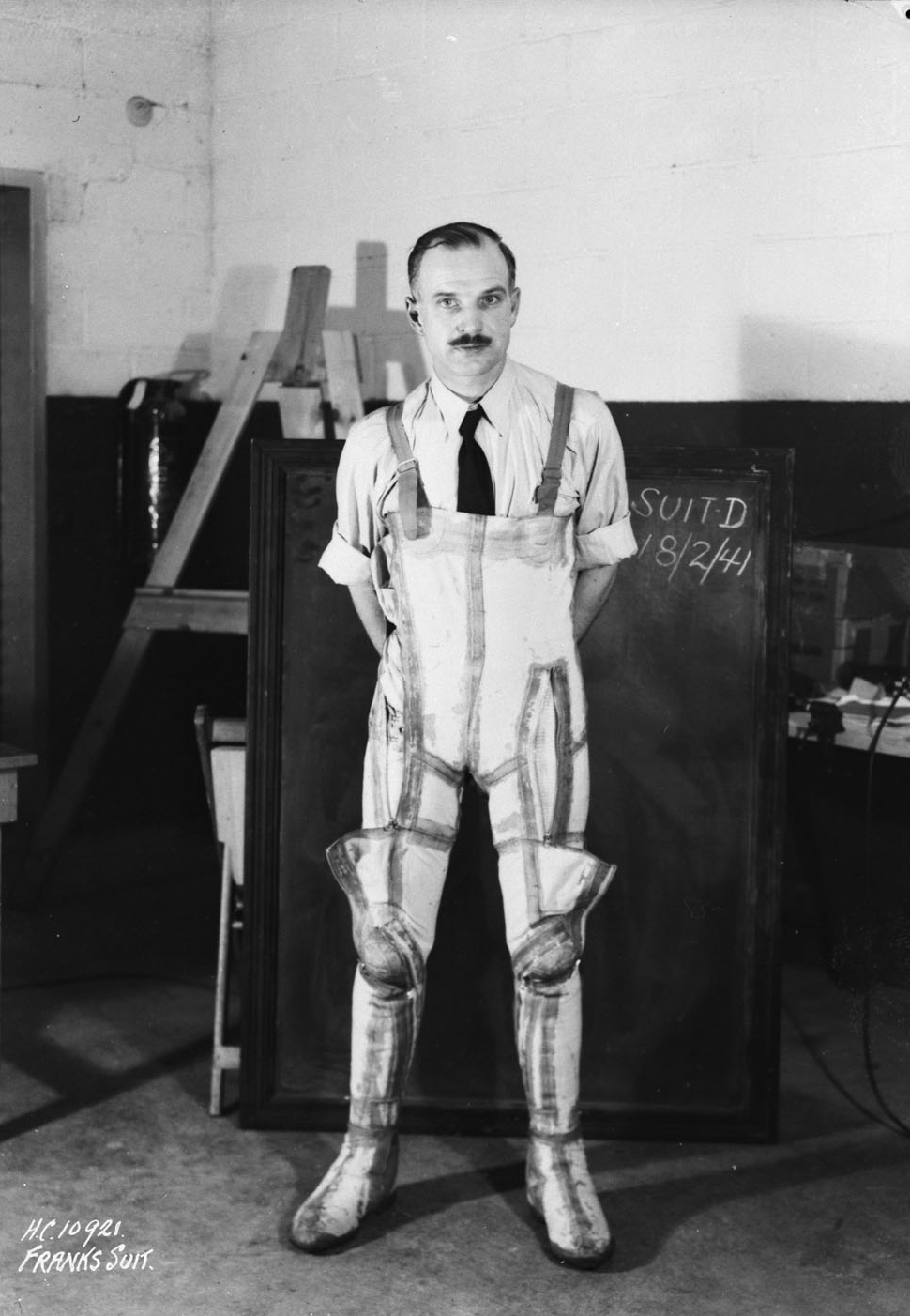
Initially, Franks made his research on his own and works were slow due to lack of financial resources and a suitable aircraft. Things changed in 1940, when he received support from the British authorities, as well as an example of Supermarine Spitfire fighter. Franks´ laboratory was turned into the RCAF Institute of Aviation Medicine, which exists until today as Defence Research and Development Canada.
The Canadian researcher built the first domestic human centrifuge and began to create the g-suits which he personally tested. Therefore, he soon became the first person to be protected from the effects of radial acceleration in aircraft.
In 1941, the first operational g-suits, made by Dunlop, were ready for use. Then, they were evaluated by the RAF Fighter Command and the Fleet Air Arm. Although initially the British pilots did not like the suit, considering it uncomfortable, they soon realised the Franks´ invention was saving their lives.
On 8th November 1942, with the commence of Operation Torch in the North Africa, the Franks´ G-Suit were for the first time used in combat – by pilots of No. 807 Squadron FAA, flying Supermarine Seafire aircraft (a naval variant of Spitfire).
In 1943, Franks was appointed Director of the Investigation Section of the RCAF Headquarters Directorate of Medical Services in Ottawa, where he stayed until the end of the war. Then, he was transferred to the RCAF Institute of Aviation Medical Research, National Research Council.
In 1946, Wilbur Franks retired from the armed forces. He returned to his previous research centre, the Banting and Best Department of Medical Research to continue his cancer-related works. In addition, Franks began studies on aerospace medicine.
Wilbur Franks retired from medical research in 1969. He died on 4th January 1986, aged 85.
For his contribution to aviation and aerospace medicine, Franks was made an Officer of the Order of the British Empire in 1944 and received the United States Legion of Merit in 1946. He also received several awards in medicine science and industry, as well as was appointed Honorary Physician to the Queen in 1966 and Honorary President of the Canadian Society of Aviation Medicine in 1974.
In 1983, Wilbur R. Franks was inducted into the Canadian´s Aviation Hall of Fame.

Information from the Canadian government website were used. Cover photo: Supermarine Seafire, the new Royal Navy fighter, on board of HMS Victorious, May 1942 (illustrative photo, IWM (A 9730), cropped). All IWM photos used under the IWM Non-commercial licence).

